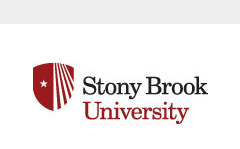Document Type
Lesson Plan
Location
Charles B. Wang Center
Event Website
http://www.centerfornewsliteracy.org/globalconference2017/
Keywords
news literacy, journalism, media, news, public relations, media relations, marketing, advertising, crisis communication, social media, digital media, ethics, transparency, press release, vide news release, search engine optimization, accountability, consumer power
Start Date
8-14-2017 3:00 PM
End Date
8-14-2017 4:30 PM
Description
In its current state, news literacy curriculum covers all the information types that consumers will see when they read, watch, listen to, and interact with news content. While current lessons do explain how press releases distribute information in the “promotion / publicity” neighborhood, there is much more nuance to the practice of PR that impacts information people read as ‘news’. In today’s climate of political spin cycles, it is more important than ever for news consumers to understand what public relations is and how its strategies influence news content. Because the practice of public relations is so often misunderstood and because brand management and media relations strategies, by nature, can mislead news consumers, we as news literacy educators have an opportunity – and responsibility – to shed a brighter light on the practice of public relations, its relationship with journalism, and how it influences news content so that news consumers can better recognize the influence of public relations before taking action. Further, if more news consumers demanded transparency and forthright information from PR practitioners, the ability of journalists to obtain helpful information would increase. An advanced news literacy course that focuses more specifically on public relations in the news can also help inform other much-needed advanced topics in news literacy. To build on this course, in-depth curriculums on political economies of news media, digital news media, and social media and the news can also give news consumers more context on what influences news content, including their government’s policies, the expansion of web-based content and how it impacts traditional news media, and how they (unintentionally) impact what other users are exposed to on social media.
Included in
Overcoming the Dark Side: Seeing through the spin of public relations in the news
Charles B. Wang Center
In its current state, news literacy curriculum covers all the information types that consumers will see when they read, watch, listen to, and interact with news content. While current lessons do explain how press releases distribute information in the “promotion / publicity” neighborhood, there is much more nuance to the practice of PR that impacts information people read as ‘news’. In today’s climate of political spin cycles, it is more important than ever for news consumers to understand what public relations is and how its strategies influence news content. Because the practice of public relations is so often misunderstood and because brand management and media relations strategies, by nature, can mislead news consumers, we as news literacy educators have an opportunity – and responsibility – to shed a brighter light on the practice of public relations, its relationship with journalism, and how it influences news content so that news consumers can better recognize the influence of public relations before taking action. Further, if more news consumers demanded transparency and forthright information from PR practitioners, the ability of journalists to obtain helpful information would increase. An advanced news literacy course that focuses more specifically on public relations in the news can also help inform other much-needed advanced topics in news literacy. To build on this course, in-depth curriculums on political economies of news media, digital news media, and social media and the news can also give news consumers more context on what influences news content, including their government’s policies, the expansion of web-based content and how it impacts traditional news media, and how they (unintentionally) impact what other users are exposed to on social media.
https://commons.library.stonybrook.edu/cnlglobalconference/cnl2017/one/6

